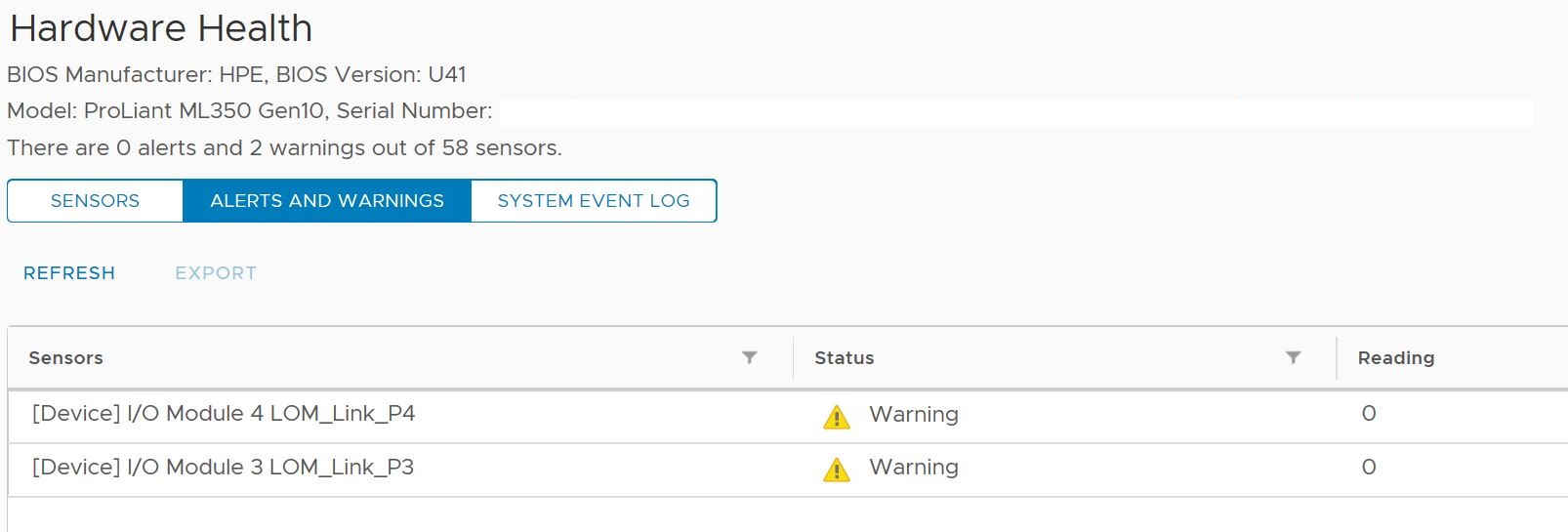I have lately been involved in two vSAN installation that had this alert in vSAN Health pane.

Another side effect is that the hosts on the warning list is unable to enter maintenance mode.
Continue readingI have lately been involved in two vSAN installation that had this alert in vSAN Health pane.

Another side effect is that the hosts on the warning list is unable to enter maintenance mode.
Continue readingI’ve just seen this in the release notes for VMware vCenter Server Appliance 6.7 Update 1b:
Removing a virtual machine folder from the inventory by using the vSphere Client might delete all virtual machines
In the vSphere Client, if you right-click on a folder and select Remove from Inventory from the drop-down menu, the action might delete all virtual machines in that folder from the disk and underlying datastore, and cause data loss.This issue is resolved in this release.
I’ve just checked this in my lab on the 6.7 U1b release – when I delete a VMfolder with a VM inside – the VM gets removed from inventory but not deleted on the datastore!
If I delete a VMfolder containing a VM, in vCenter 6.5 the VM gets deleted in the datastore!
Be careful when deleting virtual machine folders!

For quite some time I have observed a LOM warning in VMware health status tab on an HPE Proliant ML350 Gen10 server. It seems like it reports the warning on two NIC that are down, even though there are unused by ESXi.
A couple of days ago I was visiting a customer to setup their Lenovo host to run vSAN – after the initial setup of vSAN kernel IPs, disk groups and so on, I took a look at the “VSAN Health check” to make sure that everything was healthy and supported.
Under the “hardware compatibility” part all checkmarks where green, but the Controller firmware version was not detected – so I did found it a bit strange that it reports the disk controller as supported without knowing what version it actually was running.
![]()
![]()
This issue is not new to me, as I have seen it a couple of times before, but this time it was different after all.
This blog post is not about the L1 Terminal Fault (L1TF -> VMware KB56931) but about the HTAware Mitigation tool version 1.0.0.9 (HTAwareMitigation-1.0.0.9.zip) that seems to have issues when used on single hosts (instead of clusters) – here is the problem that I have observed.
You run the command:
Set-HTAwareMitigationConfig -VMhostName <hostname> -Enable
Followed by
Get-HTAwareMitigationConfig -VMhostName <hostname>

Get-HTAwareMitigationConfig not working on single host
As you might see the “Set-HTAwareMitigationConfig -VMhostname <hostname>” command doesn’t seem to do anything!
So, you find yourself in a situation where you have lost the root password for your ESXi host(s). Luckily there are multiple ways of resetting it – but the best method depends on the exact situation. Ill try to outline three different scenarios (of course, more exists) – maybe your are placed in a completely different scenario but maybe this post can help you anyway.